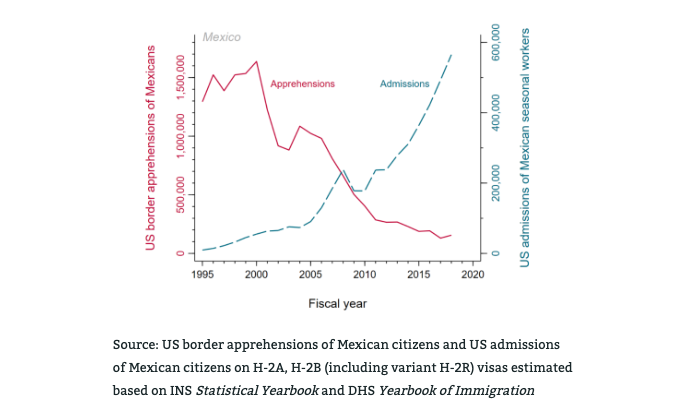
Testimony Before the Senate Judiciary Subcommittee on Immigration, Citizenship, and Border Safety
Hearing: Strengthening our Workforce and Economy through Higher Education and Immigration
Click here for pdf version
June 14, 2022
Thank you, Chair Padilla, Senator Cornyn, and members of the committee for the opportunity to testify today.
My name is Mia Love. I am a proud former representative for Utah’s fourth district. I currently serve as the national outreach director at The Center for Growth and Opportunity at Utah State University.
My story begins with immigration. My parents left their home in Haiti 48 years ago and came to the United States because this country offered two things that they desired more than anything else: freedom and opportunity. With courage, faith, and grit, they showed me that the American Dream was possible. I would not be who I am today if they hadn’t made the brave choice to join this great nation, like so many immigrants before them.
My background, and my parents’ legacy, are what drive my passion to find lasting policy solutions to our immigration system.
I’m here to discuss two of today’s most pressing immigration challenges:
- Creating an immigration system that meets the needs of US companies so the American workforce can compete on a global scale.
- Creating an orderly and humane system of asylum that lives up to American ideals and freedoms.
Both these areas deserve congressional attention and policy reform.
Today’s immigration system does not meet the needs of the American people
I’ll start by addressing the American workforce.
Today the US economy is missing 5 million workers. There are about 11 million open jobs in the country, but fewer than 6 million unemployed people.
In other words, there are two open jobs for every unemployed person in the country.
Source: FRED, accessed June 3, 2022.
We need people.
We need them in every industry at every level. We need more health care workers—doctors, nurses, and CNAs. We need manufacturing employees, pilots, and plumbers. We need people to work in our restaurants, on our farms, in daycare centers. We need people to work building our homes our roads.
Solving the immigration problem is clearly in the interest of our economy. The US has much to gain from adding to and strengthening its workforce.
Right now, the US immigration system is straining and failing to meet the needs of US companies. It’s defined by backlogs, delays, and migrants who turn to dangerous unauthorized crossings because they see it as their only option.
The challenge we face today is straightforward: Employers cannot find enough workers because they simply do not exist as US citizens within our borders.
We need to reform our immigration system so that it can stabilize our workforce to support American businesses across the country.
Reform for Dreamers is valuable for preserving the American workforce
Tomorrow, June 15, will mark 10 years since the original implementation of the Deferred Action for Childhood Arrivals (DACA) program. Creating a solution for Dreamers has been a policy challenge for even longer, however. The original “Dreamer” legislation was introduced in 2001.1S.1291, “DREAM Act,” 107th Congress, 2001, https://www.congress.gov/bill/107th-congress/senate-bill/1291; Muzaffar Chishti and Julia Gelatt, “At Its 10th Anniversary, DACA Faces a Tenuous Future Despite Societal Benefits,” Migration Policy Institute, June 9, 2022, https://www.migrationpolicy.org/article/daca-10th-anniversary.
As children brought to the US, Dreamers make a sympathetic case for immigration reform.
Consider Liliana Tapia Bolaños, a Utahn like me. Liliana was brought to Orem, Utah when she was just three years old. Because of DACA, she has served a religious mission, started college, and worked as an intern advocating for the rights and welfare of children.2Liliana Tapia Bolaños, “DACA Allows Undocumented Students, Like Me, to Fly,” Deseret News, July 7, 2020, https://www.deseret.com/opinion/2020/7/7/21316255/deferred-action-for-childhood-arrivals-daca-utah-supreme-court-allows-students-to-fly-freedom.
As of the most recent US Citizenship and Immigration Services data, there are 611,469 people like Liliana across the country.3“Count of Active DACA Recipients By Month of Current DACA Expiration As of December 31, 2021,” US Citizenship and Immigration Services, https://www.uscis.gov/sites/default/files/document/reports/Active_DACA_Recipients_December_31_2021.pdf.
Though DACA has protected many over the last decade, its origin in the executive branch makes it a prime example of the need for congressional action as a replacement. It’s not permanent or stable.
The program is now under review in the courts, and if it is ultimately struck down, DACA recipients could lose their work authorizations. Only Congress can give DACA recipients the strong legal footing they deserve.
Congress can provide firm and certain protection for the Dreamers in the country through smart, tailored, and simple authorization programs. But this will require compromises that marry enforcement with a pathway to work authorization and legal status, so that we address the underlying reasons that people live in the shadows for many years.
When I represented Utah’s Fourth Congressional District in the House of Representatives, I partnered with my colleagues to introduce broad, balanced, and bipartisan measures, and I would like to see Congress once again work together to seek true bipartisan compromise in this area.4Uniting and Securing America (USA) Act of 2018, H.R. 4796 (115th Cong.)
The US immigration system faces multiple problems
Of course, immigration is a multi-pronged issue. No single change will fix the immigration system. In addition to congressional reform for Dreamers, policymakers should pursue these other reforms.
Skilled immigration should be expanded
Consider the US’s primary skilled immigration category, the H-1B visa. According to research from The Center for Growth and Opportunity, the H-1B visa has been a valuable component of the US immigration system since 1990, but its operation has not kept pace with the country’s needs.
In 2005, 85,000 visas were available. Today, nearly 20 years later, our country has grown, but only the same 85,000 visas are available.5Josh T. Smith, “Competing for People,” The Benchmark, The Center for Growth and Opportunity at Utah State University, https://www.thecgo.org/benchmark/competing-for-people.
There are many promising options for expanding skilled immigration:
- Creating pathways for employers to petition for workers with special skills.
- Streamlining applications that currently take years for those who are already waiting in lines that continue to grow.6David Bier’s analysis of USCIS data shows that the average employment-based visa timeline is 76 years. This is because Indian and Chinese visa applicants face massive delays. David J. Bier, “1.4 Million Skilled Immigrants in Employment-Based Green Card Backlogs in 2021,” March 8, 2022, Cato Institute, https://www.cato.org/blog/14-million-skilled-immigrants-employment-based-green-card-backlogs-2021.
- Evaluating whether current processes inhibit F-1 student visa applicants from transitioning to H-1B or EB visas.7Sadikshya Nepal, “The Challenging Transition from an International Student Visa to an H-1B: A Primer,” The Bipartisan Policy Center, July 15, 2020, https://bipartisanpolicy.org/blog/the-challenging-transition-from-an-international-student-visa-to-an-h-1b-a-primer/.
- Addressing the problem of the children of H-1B visa holders aging out of their derivative status.8See: Dip Patel, Statement for the Record Submitted to the House Judiciary Committee’s Subcommittee on Immigration and Citizenship, April 28, 2021, https://docs.house.gov/meetings/JU/JU01/20210428/112515/HHRG-117-JU01-20210428-SD010.pdf.
Research suggests that the expansion of high-skilled immigration will boost economic growth,9Giovanni Peri, Kevin Shih, and Chad Sparber, “How Highly Educated Immigrants Raise Native Wages,” VoxEU.Org, May 29, 2014, https://voxeu.org/article/how-highly-educated-immigrants-raise-native-wages; Giovanni Peri, Kevin Shih, and Chad Sparber, “STEM Workers, H-1B Visas, and Productivity in US Cities,” Journal of Labor Economics 33, no. S1 (July 1, 2015): 252, doi:10.1086/679061 expand American businesses,10“Gross Domestic Product (GDP),” Federal Reserve Economic Data (FRED), https://fred.stlouisfed.org/graph/?g=Qobx.and provide more opportunities for the most disadvantaged Americans.11Michael E. Waugh, “Firm Dynamics and Immigration: The Case of High-Skilled Immigration,” in High-Skilled Migration to the United States and Its Economic Consequences (University of Chicago Press, 2017), 205–38, https://www.nber.org/books-and-chapters/high-skilled-migration-united-states-and-its-economic-consequences/firm-dynamics-and-immigration-case-high-skilled-immigration; Pierre Azoulay et al., “Immigration and Entrepreneurship in the United States,” American Economic Review: Insights 4, no. 1 (March 1, 2022): 71–88, doi:10.1257/aeri.20200588.
Farmers, retail, and other industries all need access to workers too
The worker shortage is fueling the record-high inflation we’re experiencing.
The economy is more than rocket scientists, engineers, and artificial intelligence experts. Groceries, and everyday necessities arrive on store shelves and in packages on your doorstep because farmers, ranchers, and retail workers work hard to get them there. Today’s worker shortage contributes to higher prices for food, health, and basic needs.
The damage of today’s worker shortage are evident across the economy. Opening more avenues for immigrant workers will help tame inflation and encourage economic growth.12Adam A. Millsap, “These Reforms Would Increase Economic Growth and Help Alleviate Inflation,” Forbes, June 10, 2022, https://www.forbes.com/sites/adammillsap/2022/06/10/these-reforms-would-increase-economic-growth-and-help-alleviate-inflation/?sh=23c356a93700; Josh T. Smith, “Immigration as Economic and Workforce Stabilization,” Newsday, June 3, 2022, https://www.newsday.com/opinion/commentary/job-openings-immigration-labor-shortage-apiyz2x3.
Responding to disorder at the border requires getting our own house in order
Finally, if we want to control and shape immigration flows into the country, then we must first get our own house in order.13Theresa Cardinal Brown, “The US Needs an Immediate Strategic Shift at the Southern Border,” May 14, 2021, The Hill, https://thehill.com/opinion/immigration/3487749-the-u-s-needs-an-immediate-strategic-shift-at-the-southern-border/.
We are continuing to see record apprehensions of migrants along the southern border. In April 2022 alone, US Customs and Border Protection encountered 234,088 migrants.14US Customs & Border Protection, Southwest Land Border Encounters (last modified May 13, 2022), https://www.cbp.gov/newsroom/stats/southwest-land-border-encounters Many of these migrants are coming here seeking better economic opportunities, and have been exploited by transnational criminal organizations that have sold them on the false hope that they can achieve their dreams by merely crossing the border. Unfortunately, our immigration courts will likely find that the vast majority of these migrants do not qualify for asylum.15Executive Office for Immigration Review, Adjudication Statistics: Defensive Asylum Applications, US Department of Justice (Apr. 18, 2022), https://www.justice.gov/eoir/page/file/1163616/download. If and when they are ultimately removed, they will lose their eligibility to participate in our employment-based immigration and guestworker programs, which is a tragedy.
We need to put into place a safe, humane, and efficient system that honors our international commitment to adjudicate asylum claims but deters migrants with weak claims from putting themselves in danger and fruitlessly making the perilous journey to the southern border.
I am encouraged by efforts like Ranking Member Cornyn’s partnership with Sen. Kyrsten Sinema, which would ensure that we have safe and adequate facilities along the border, along with efficient processes that keep migrants informed of their rights and render faster decisions.
Policymakers should also consider how to make guestworker programs accessible for migrants and the businesses that use them. That could include outreach and recruitment in foreign countries and easing the bureaucratic and complex application process for businesses.16David J. Bier, “H-2B Visas: The Complex Process for Nonagricultural Employers to Hire Guest Workers,” The Cato Institute, February 16, 2021, https://www.cato.org/publications/policy-analysis/h-2b-visas-complex-process-nonagricultural-employers-hire-guest-workers#foreign-workers-h-2b-program
Last summer, tens of thousands of Haitian people gathered in Del Rio, Texas, at our southern border seeking asylum. But because they were from Haiti, a country not on the DHS eligibility list for H-2A or H-2B visas at that time, the crowds were unable to enter the country or claim existing work visas.17“DHS Announces Countries Eligible for H-2A and H-2B Visa Programs,” US Citizenship and Immigration Services, January 12, 2021, https://www.uscis.gov/news/alerts/dhs-announces-countries-eligible-for-h-2a-and-h-2b-visa-programs; Daniel Garza, “Recent Arrivals of Haitian Migrants Underscores Urgency for Congress To Act,” Univision News, November 9, 2021, https://www.univision.com/univision-news/opinion/opinion-arrivals-of-haitian-migrants-underscores-urgency-for-congress-to-act. This limitation has since been removed and Haitian people are eligible for the program. See: “DHS Announces Six New Countries Eligible for the H-2A and H-2B Visa Programs,” Department of Homeland Security, November 9, 2021, https://www.dhs.gov/news/2021/11/09/dhs-announces-six-new-countries-eligible-h-2a-and-h-2b-visa-programs. Though Haiti has since become eligible, the migrants who were removed have now lost the opportunity to contribute their skills to the US economy.
We need to emphasize that cross-border migration jeopardizes migrants’ opportunities to come to the United States legally in the future.
We should also ensure that migrants have access to pathways to come to the United States lawfully. Research has established that expanding legal pathways reduces illegal immigration.18Sam Peak, “How the Dignity Act Can Restore Order to the US Border,” March 1, 2022, https://americansforprosperity.org/dignity-act-us-border-solutions. When seasonal work visas—the H-2A and H-2B programs—expanded in 2000, apprehensions of Mexican workers at the border plummeted.19Michael Clemens and Jimmy Graham, “Three Facts You Haven’t Heard Much About Are Keys to Better Policy Toward Central America,” Center for Global Development, November 1, 2019, https://www.cgdev.org/blog/three-facts-you-havent-heard-much-about-are-keys-better-policy-toward-central-america.
Connecting migrants with resources to apply for our guestworker programs will help restore order on the southern border.
Source: Michael Clemens and Jimmy Graham, “Three Facts You Haven’t Heard Much About Are Keys to Better Policy Toward Central America,” Center for Global Development, November 1, 2019, https://www.cgdev.org/blog/three-facts-you-havent-heard-much-about-are-keys-better-policy-toward-central-america.
Conclusion
For Congress, today’s immigration challenges present an opportunity to support US businesses and grow the country’s wealth that should not be forgotten or squandered. We should stop treating people like liabilities that need to be managed and start treating them like assets that can be developed for the betterment of our country and communities.
My parents have always told me the greatest day of their lives was the day they became American citizens. It was the culmination of years of work. They learned how to speak English, studied American history, and learned about the Constitution. So when the day came for them to become naturalized, hold their hands up and swear allegiance to the American flag, they knew what they were saying, and they meant every word of it.
Thank you for the opportunity to speak on an issue near and dear to my heart with friends on both sides.


